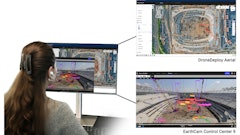
By Don Talend, Contributing Editor
Lehman-Roberts Company doesn’t wait for monthly project meetings to analyze project profitability any more. Instead, the company monitors and adjusts cost inputs weekly – so there’s often time to move a project that’s in “the red” into “the black.”
In 2010, the Memphis, Tenn.,-based heavy highway contractor replaced a legacy project management system from the 1980s with cloud-based Viewpoint Vista. Patrick Nelson, Lehman-Roberts’ CEO, says the fast, accurate cost accounting Vista provides often allows the company to change the profit trajectory of some projects in midstream.
“Prior to using Vista, we looked at our costs monthly,” Nelson says. “We’d get last month’s job cost reports on the 15th or 20th of every month and it was like reading yesterday’s newspaper.” He sometimes asked project managers why things got off track and they would guess at what went wrong. “It wasn’t fair to them,” he says.
“But if you’re talking to them on Tuesday about what happened last Thursday or yesterday, you’ve got the information there to have a meaningful discussion and it lets you get out in front of those problems before they’re history.”
Current data allows consequential adjustments
Project managers analyze the previous week’s job costs and make corrections every Tuesday. On Thursdays, they report to the Lehman-Roberts executive team on any projects that are falling short of targeted profit margins, as well as the corrective measures.
The three categories of cost inputs they can control on a typical project are labor, equipment and asphalt hauling, says Nelson, adding that all three are tied to the company’s paving production rate. Reports are customized into an online SQL Server Reporting Services engine so that project managers can access them on just about any device in real time.
“One of the things we have visibility into is what our true equipment costs are,” Nelson says. “Vista has really helped us on the haul side. We don’t own any trucks—we use 100% independent haulers and we make sure we’re being fair with those guys and treating them well.”
Nevertheless, project manager must keep the optimal number of trucks in mind, Nelson adds. “The foreman is always motivated to overtruck his job and let ’em pile up in front of a paver. From a quality perspective, he never wants to run out of trucks. It’s expensive, though.”
The software provides insight into haulers’ time and their productivity. “You can see pretty quickly when a job is over- or under-trucked,” he says. “Vista gives us insight into the right number of trucks from the plant to the job.
“We’re doing daily and weekly reporting on job costs and Vista has been a difference-maker for us from the standpoint of accountability,” Nelson continues. “I’m a big believer that you’ve got to find your problems very early—in the first 10 percentage of completion. The first 10% and last 10% on a job are where you get hurt most often.”
Many projects incur major costs just getting launched and never recover. Failure to close out projects can cost money, too. For example, a motorist might drive onto an unfinished pavement section and take out a guardrail, which then needs to be replaced.
Nelson reports that the insight into project costs, and project managers’ ability to take proactive course-correction steps before a project is completed, have improved project profit margins.
Results more than worth the wait
Tracking costs with the software took a while to incorporate into daily operations, but now it is standard operating procedure for project foremen. They all keep Vista-equipped laptops in their trucks and enter data from work orders to payroll to equipment as soon as the information is available.
Lehman-Roberts had Viewpoint bring in trainers to show the staff how to use Vista for both accounting and project management functions. Then the contractor’s IT department took over the bulk of the training. Bringing the training in-house allowed the company to customize the program to its operation.
Nelson admits that cultural acceptance of real-time reporting took a while. It was a couple of years before all foremen started using the system and another year for them to gain the experience and adapt habits to settle into routinely working with it.
The speed of gaining insight into job costs – analyzing performance daily and weekly – made it more than worth the wait.
“Vista certainly has given us greater transparency in managing our costs,” Nelson says. “In a mature, competitive industry like ours, it’s really important that we do that. We should have done this ten years sooner. It’s painful, but just put your head down, walk through it and keep moving. Be very wise about the technology partners you pick. You’ll make mistakes—just be willing to learn from them.”



















